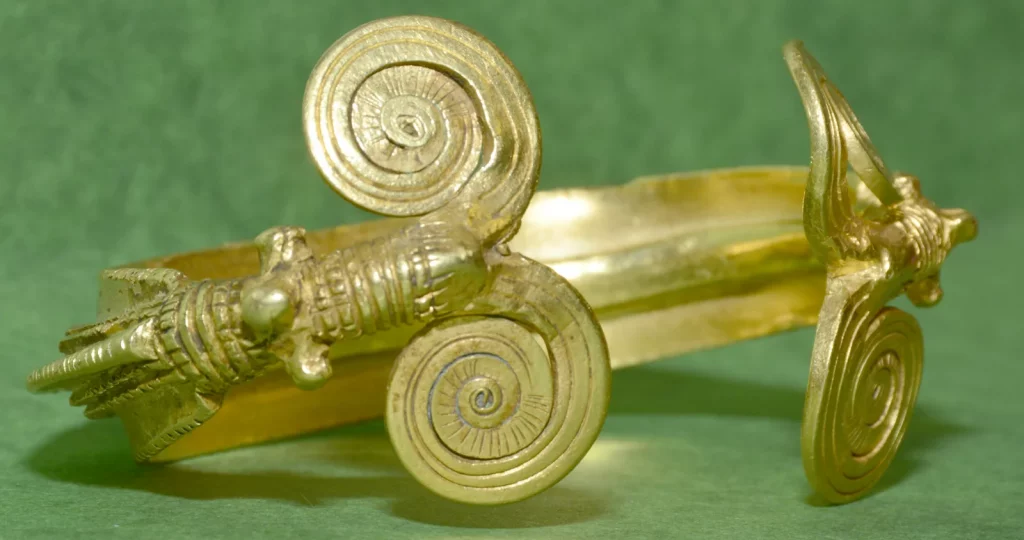Law & Politics
Belgium Returns Illegally Exported Celtic Bracelets to Romania
The trio of treasures were put up for auction in Monaco but their dodgy provenance raised suspicions.

The trio of treasures were put up for auction in Monaco but their dodgy provenance raised suspicions.

Jo Lawson-Tancred

A set of three Celtic bracelets have been repatriated to Romania by the region of Flanders in Belgium after it was discovered that they had been illegally excavated and exported out of the country to be sold at auction. The items were officially repatriated to the Romanian ambassador in a ceremony held on February 19 at the Museum aan de Stroom in Antwerp.
Two of the gold treasures dating from around 1000 B.C.E. were offered for sale at a Monaco auction house in 2020. Estimated at €80,000-€100,000 ($85,000-$110,000), they had been touted as the sale’s top lot and featured on the catalog’s cover.
Beneath the flashy headline, however, the catalog entry claimed these mysterious bangles had been discovered in a ditch in the Flemish village of Houtem, a provenance that raised some suspicion. This backstory was particularly surprising given the Celtic jewelry design was completely inconsistent with the traditions of Western Europe but could be connected instead to the Eastern Carpathians, or modern-day Romania. The find was unusual enough that Jan Jambon, the minister-president of Flanders, was alerted.

Photo: Courtesy of Flanders’s Department of Culture, Sport, and Media. .
“The experts were amazed,” he told the Belgian newspaper Het Nieuwsblad. “A discovery like this had never been made before in Western Europe.”
To verify their provenance, the auction house was asked to cancel the sale pending further investigation. But the request was refused. On the advice of the Masterpieces Council, Jambon had the bracelets protected as “masterpieces.” According to Flemish law, this designation would bar them from being sold by the auction house without permission.
A subsequent judicial investigation found that the precious pieces of jewelry were illegally excavated in Romania and their most recently deceased owner had acquired them there in exchange for an antique hunting rifle. They were then illegally exported out of the country along with a third bracelet, which was found in the late owner’s house.
All three were returned as a set to Romania.
“It is a relief that I can give you back these three Celtic bracelets,” Jamon told the ambassador.